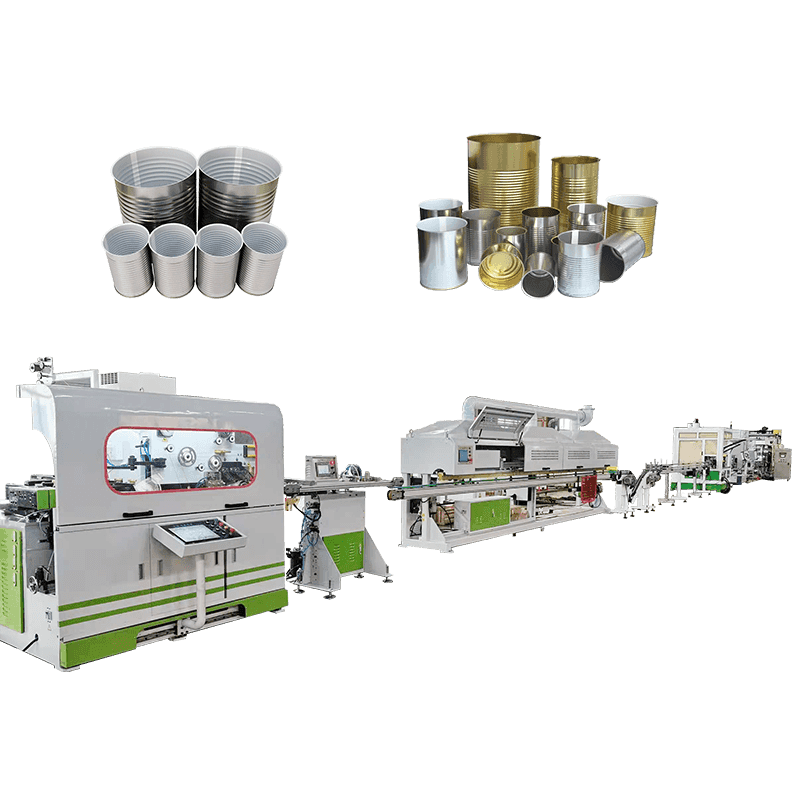As an important equipment for food packaging, the energy consumption level and environmental performance of the three-piece food can production line have attracted much attention. In today's society, the requirements for energy conservation and emission reduction are increasing. The energy consumption control of the production line not only affects the operating costs of the enterprise, but also relates to environmental protection and sustainable development. To explore the energy consumption and environmental performance of the three-piece food can production line, it is necessary to analyze from multiple angles such as equipment design, process flow, energy utilization and emission control.
The design concept of the equipment directly affects the energy consumption level. Modern three-piece food can production lines usually focus on optimizing the mechanical structure and movement mode in the design stage to reduce mechanical loss and power waste. By adopting high-efficiency motors and transmission systems, the power transmission efficiency is improved, and energy consumption is fundamentally reduced. In addition, some processes in the production line use intelligent control systems, which can dynamically adjust the operating parameters according to actual production needs, avoid unnecessary idling and power waste, and effectively save energy.
The reasonable arrangement of the process flow also has an important impact on energy consumption. The manufacture of three-piece cans involves multiple links such as material forming, welding, and inspection, and each step requires a certain amount of energy. By improving the process flow and achieving close connection and coordination of the processes, the production cycle can be shortened and the total energy consumption can be reduced. At the same time, the use of advanced welding technology and heat treatment processes to improve heating and cooling efficiency can also help reduce energy use.
In terms of energy utilization, many production lines have begun to introduce energy-saving and environmentally friendly equipment and technologies. For example, some equipment is equipped with a heat recovery device to recycle the waste heat released during welding and heating, reducing dependence on external energy. In addition, the use of a frequency converter to adjust the motor speed can reasonably distribute energy according to load changes and avoid energy waste. The application of these technologies not only reduces energy consumption, but also reduces the impact on the environment.
In terms of environmental performance, the three-piece food can production line focuses on reducing waste gas, wastewater and solid waste generated during the production process. Sealing and emission control are considered in equipment design to prevent the leakage of harmful gases and ensure that the air quality in the workshop meets environmental protection requirements. For welding fumes and other industrial waste, corresponding treatment devices such as filtration systems and waste gas purification equipment are usually equipped to reduce pollutant emissions.
The production line also pays attention to the rational use of materials and waste recycling. By precisely controlling the material cutting and forming process, reducing the waste of raw materials, it helps to reduce resource consumption and environmental burden. Waste scraps are usually recycled and put back into the production cycle to achieve the recycling of resources and promote the concept of green manufacturing.
The environmental awareness of operators and the maintenance and management of equipment are equally important. By training operators to standardize operations, energy waste and pollution emissions caused by equipment misoperation can be reduced. At the same time, regular maintenance and maintenance of equipment can ensure equipment operating efficiency and sealing performance, and prevent increased energy consumption and environmental pollution caused by equipment aging or damage.
The three-piece food can production line has made continuous progress in energy consumption and environmental protection, and equipment design and technology application are moving towards a more energy-saving and environmentally friendly direction. With the improvement of technology and management level, this type of production line will play a more active role in reducing energy consumption and protecting the environment in the future, and contribute to the realization of industrial green transformation.

 English
English عربى
عربى русский
русский




